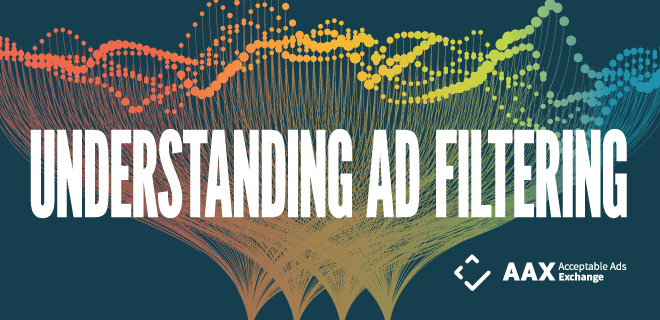
We’re on the road to post-pandemic recovery and consumer habits are shifting steadily.
The surge in digital media consumption continues. Ad spend is flowing freely beside the traffic stream. But unfortunately, to the dismay of publishers and advertisers alike, ad block usage is on the rise.
And you’re probably thinking that the majority of people blocking ads flat out hate them — sheesh, that’s a lot of lost traffic running like water under the bridge. But your ruminations couldn’t be further from the truth. Truth is, people install ad blockers because they want to filter out annoying, intrusive ads.
This brings us to another major consumer behavioral shift that started trending ever since we entered the pandemic era: ad blockers are becoming ad filterers — the 95% of all ad-blocking users who have an ad blocker installed but still consent to be served ads.
This affluent, well-educated, highly engaged audience understands the value exchange of the open web — that the user experience can be enhanced by personalized advertising, that is noninvasive, and often “Acceptable Ads.” Given this group’s high purchase intent, there are endless commerce opportunities just waiting for publishers to leverage them. Considering ad-blocking users can average up to 15% of publisher’s traffic, that’s untapped revenue you really don’t want to miss.
Back in November, we learned that ad filterers are passionate media consumers, who are curious and intrigued by novelty. Not only do they spend a lot of time online, but they also tend to devote a lot of their free time to gaming. They engage with brands on social media, and surprisingly make purchases based upon ads they encounter online. Nope, they don’t find personalized advertising creepy at all.
But before you dash off and start brainstorming monetization strategies, you might want to gain a better understanding of these ad filterers. Maybe it’s time we consult AAX’s latest study: Why Block Ads? Behind User Reasons and Motivations.
What Makes Them Tick?
Once upon a time, I worked as a strategist at an advertising agency. And before coming up with the big idea to pitch to the client we had to gain an informed understanding of the intended audience. Researching the target audience thoroughly ultimately led to a breakthrough insight. Something strategist Mark Pollard calls unspoken human truths.
So let’s dig deeper into the ad filterers’ mindset, way down deep into what makes them tick and how their motivations have changed over time.
Historically, the primary reason folks found ads annoying was that they were too intrusive or there were just too many ads on the internet. But since the pandemic, the reasons have become a little more nuanced: “I try to avoid all ads wherever, whether on TV or online.” Or, perhaps, “To avoid having to see video ads before watching clips/shows.”
When comparing people’s overall motivations between 2017 and 202o, the study found: 61.3% of people said they blocked ads because “Too many ads on the internet are annoying or irrelevant” back in 2017, compared to only 57% in 2020.
And while ad filterers want to avoid ads that are personalized based upon their browsing history, the issue of ad irrelevance remains paramount. Far more than viruses, bugs, or their privacy being compromised; ad filterers block ads because they’re being served too many ads that have nothing to do with their interests.
The insight: Ad filterers aren’t against advertising, they’re just against ads that serve them no purpose.
The Problem With Ad Fatigue
Since the pandemic, streaming media — buoyed by OTT, CTV, and digital audio — is booming. Unfortunately, these increases in streaming media consumption, along with the precise targeting ability of streaming platforms, can lead to something known as ad fatigue — when viewers are often shown the same ad, over and over again. This is one of those instances where the user experience becomes totally annoying, and it’s a key reason that people want to block ads.
Frequency capping, setting a frequency to manage the number of impressions, is one way to handle this. But frequency without context is a major problem.
As the third-party cookie starts to crumble and context rises up once more, publishers have the advantage of utilizing their first-party data to tie advertising to their audiences’ interests, actions, and behaviors.
But wouldn’t it be more prudent to let the user decide?
Consumer’s Choice
For some large-sized publishers, it might make sense to put up a paywall to recoup lost advertising revenue. But since ad filterers are such a savvy audience, in many cases, interruptive paywalls are going to be just as annoying as irrelevant, intrusive advertising.
Maybe publishers should consider a happy medium, one that offers consumers a little more control. Eighty-three percent of ad-blocking users say they’re happy to see ads that respect their experience.
When a publisher doesn’t overload a user with ads and offers them the option to allow or accept ads, that meet certain standards: 1/ aren’t intrusive or annoying, 2/ are respectful and don’t interfere with content, 3/ and are clearly labeled with the word “advertisement,” — it makes the value exchange clear and puts the user in the driver seat.
The times they are a changing, but one thing remains constant, people are going to continue to block ads. Wouldn’t you rather engage them based on their motivations than strictly on your monetization goals?